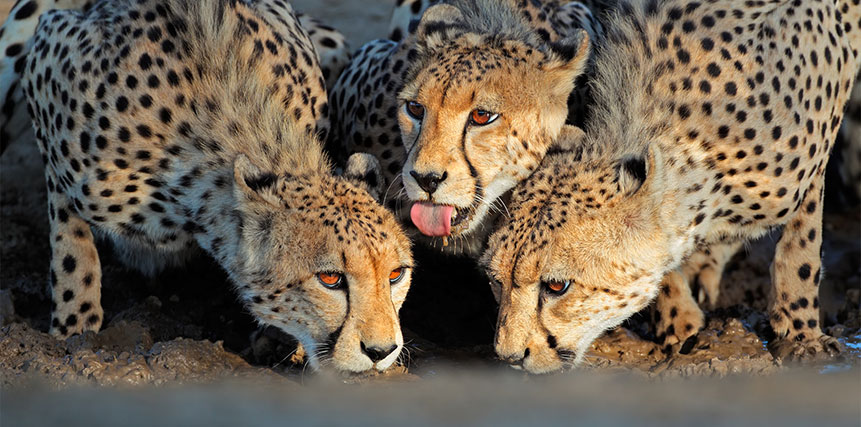Cheetah Itineraries
Book your ultimate adventure today!
Zambia & Lake Malawi Honeymoon
Zambia, Cheetah, Leopard, Lion, Natural Wonders, Bush & Beach, HoneymoonsIndulge in this exclusive Zambia & Lake Malawi honeymoon safari. Offering luxury and exceptional value, it is the perfect honeymoon getaway. Prices: On request Duration: 10 nights Availability: June through…
Explore
Kenya Family Safari Holiday
Kenya, Zanzibar, African Elephant, African Wild Dog, Cheetah, Leopard, Lion, White Rhinoceros, Africa After Dark, Hot Air Balloon Safari, Walking Safaris, Bush & Beach, Family & FriendsExperience a Kenya family safari holiday in one of the best family safari destinations in Africa. Laikipia is non-malarial, packed with large game and many lodges operate child specific safari…
Explore
Ultimate Kenya Safari
Kenya, African Elephant, African Wild Dog, Cheetah, Leopard, Lion, White Rhinoceros, Africa After Dark, Hot Air Balloon Safari, HoneymoonsExperience two of Kenya’s finest game destinations by combining the exclusive and activity abundant Loisaba Conservancy in Laikipia with the unrivalled wildlife densities of the Maasai Mara. Prices: On request…
Explore
Maasai Mara & Zanzibar Escape
Kenya, Zanzibar, African Elephant, Cheetah, Leopard, Lion, Hot Air Balloon Safari, Bush & Beach, Honeymoons, Family & FriendsExplore the world famous Maasai Mara, a land of quintessential African plains where wildebeest migrate in large numbers and predators rule. Rest and reflect on the pristine white sand beaches…
Explore
Botswana & Victoria Falls Adventure
Botswana, African Elephant, African Wild Dog, Cheetah, Leopard, Lion, Africa After Dark, Canoeing & Makoro, Natural Wonders, Walking Safaris, HoneymoonsA superbly balanced itinerary offering 6 nights safari in two of Botswana’s premier reserves followed by a 3 nights stay around the mighty Victoria Falls. Prices: On request Duration: 9 nights…
Explore
The Best of Botswana
Botswana, African Elephant, African Wild Dog, Cheetah, Leopard, Lion, Africa After Dark, Canoeing & Makoro, Natural Wonders, Walking Safaris, HoneymoonsA high-quality itinerary taking in the wildlife rich and exclusive Kwara Concession, The Linyanti and the Central Kalahari Game Reserve. Prices: On request Duration: 9 nights Availability: Year round Destinations: Okavango Delta…
Explore
Desert & Delta
Botswana, African Wild Dog, Cheetah, Lion, Africa After Dark, Canoeing & Makoro, Natural Wonders, Walking SafarisImmerse yourself into a world of contrast as the verdant oasis of the Okavango Delta gives way to the dry and unforgiving Kalahari Desert. Interact with wildlife on foot, on…
Explore
Tanzania & Zanzibar Honeymoon
Tanzania, Zanzibar, Cheetah, Leopard, Lion, Hot Air Balloon Safari, Bush & Beach, HoneymoonsAn exceptional value honeymoon safari visiting the Ngorongoro Crater and Serengeti National Park before flying out for a relaxing week on the beaches of Zanzibar. Prices: On request Duration: 12…
Explore





